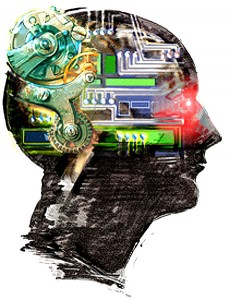FRIDAY, 17 DECEMBER 2010
According to accepted psychology theory, humans solve problems in four stages: preparation, incubation, insight, and verification. The mechanisms operating during the incubation stage are much speculated upon: theories include recovery from the fatigue of active thinking, discarding of false solutions and retrieval of solutions to similar problems. Each of these processes can be described mathematically, but previous artificial intelligence models have only made use of just one.Now, cognitive scientists Ron Sun of Rensselaer Polytechnic Institute and Sèbastien Hèlie of the University of California have unified these fragments into what they call Explicit-Implicit Interaction (EII) theory. Explicit processes are those we normally think of as ‘work’, such as reasoning and deliberative thinking. In contrast, implicit knowledge is difficult to access and verbalise, but requires little attention to process. Simultaneous use of both is necessary to solve problems creatively, but this is the first time the combined processes have been modelled mathematically.
In their paper, Sun and Hèlie describe how a computer model designed to incorporate EII was subjected to the same tests as humans. The model’s success at solving intuitive problems under different conditions (for example, being interrupted halfway through the task) matched human patterns remarkably closely.
Written by Jo Smith

